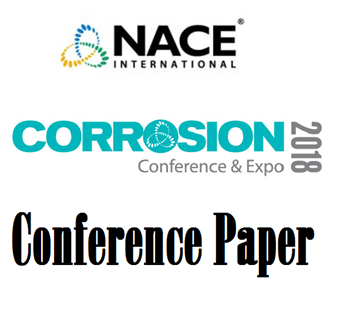Multiphase pipelines manufactured from carbon steel are susceptible to several forms of corrosion, including top-of-line (TOL) corrosion. In wet gas pipelines, produced water can condense at the top of the pipeline when the temperature and pressure along the length of the pipeline decreases. If this happens, TOL corrosion will occur, which can be severe as the pH of the condensed water will be very low (< 5). However, it is possible to mitigate TOL corrosion with the application of corrosion inhibitors.
Using corrosion inhibitors to control TOL corrosion in multiphase systems presents several challenges. The corrosion inhibitor must be carried long distances within the gas phase and partition to the condensed water when necessary to form a protective barrier on the pipeline surface. An additional issue concerns the development and testing of inhibitors that can effectively mitigate TOL corrosion. Traditional laboratory tests used to assess corrosion inhibitors (e.g., kettle tests, autoclaves and flow loop) are not suitable, as they have been designed to determine corrosion inhibitor performance in controlling corrosion in the bottom-of-line (BOL) environment. Therefore, it is necessary to develop test methods that can be used to test TOL corrosion inhibitors. In addition, corrosion inhibitors used to control BOL corrosion are not effective in preventing TOL corrosion. Conversely, inhibitors that mitigate TOL corrosion are not suitable for controlling BOL corrosion. Therefore, multiphase inhibitors are needed that will control corrosion occurring on the entire pipe surface.
This paper describes the work carried out to develop test methods suitable for assessing inhibitor performance in controlling TOL corrosion. Using the novel test methods, new corrosion inhibitors have been developed that effectively mitigate TOL corrosion. Furthermore, a hypothesis is proposed to explain the TOL corrosion inhibition mechanism. This hypothesis is based on the findings of a liquid chromatography mass spectrometry (LC-MS) analysis that was used to measure the concentration of individual corrosion inhibitor components present in the condensing brine and pH measurements of this brine. Finally, the paper examines the issues that need to be overcome when developing TOL inhibitors in the laboratory and applying them in the field to achieve effective mitigation.
Keywords: Corrosion, top of line, inhibitors




